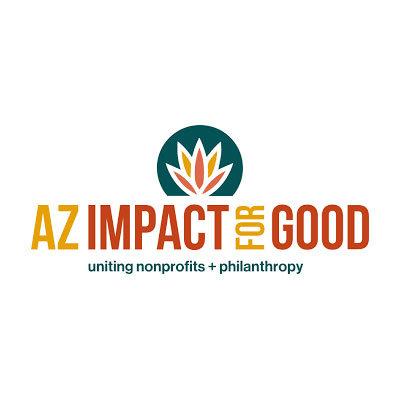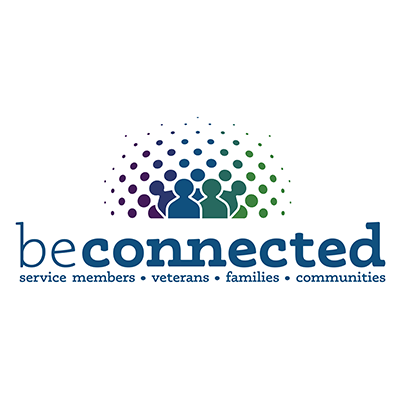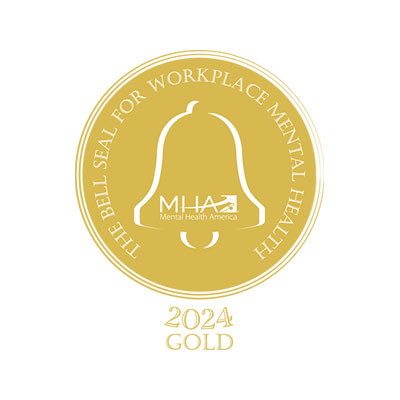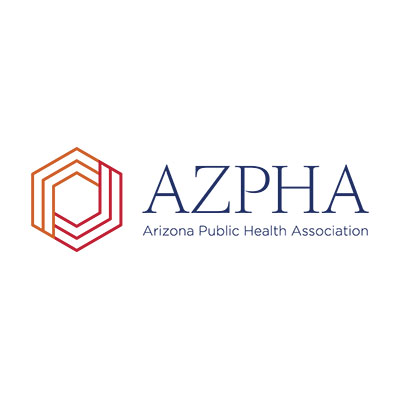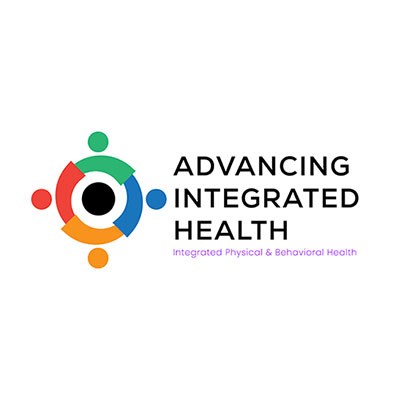Transcription
Hello, and thanks for joining us. This is disruptors at work and integrated care podcast, where all of the topics will be with subject matter experts, practitioners, and providers, leaders, and managers who are implementing integrated health projects all over the world. I’m your host, Dr. Kara English.
Well, everyone. Thanks for joining us. Um, happy pride month. It is June, 2021. And at CGI, we celebrate pride month by highlighting health challenges. By the LGBTQ population and by focusing on evidence-based solutions and innovations to work towards equity in access and quality of care for all populations.
Um, so in a couple of facts about today’s discussion, Doing some research into this area. In 2011, the Institute of medicine issued a report that outlined a research agenda, targeting several areas that could affect how the healthcare system approaches LGBTQ health, including looking more and capturing more data on demographics, social influences, disparities, inequities.
And interventions that include increasing access to care and addressing physical or mental health conditions as well as transgender specific needs, which is a huge, huge area of health care that we need improvements in the report also recommended inclusion of the LGBTQ community in national health surveys and emphasized a need for scientific rigor and a respectful environment when gathering data.
So after that 2011 report, fast forward to 2015, the American college of physicians published a position paper with recommendations to address health disparities for the LGBTQ population. Then fast forward to June of 2020, when we had a Trump administration rule that would remove non-discrimination protections for LGBTQ populations when it comes to health care and health issues.
However in May, 2021 after the election, the Biden administration reversed that policy and ensured protection under the law for trans individuals against sex and gender discrimination in healthcare and at work. So right now, the health and human services office for civil rights, the OCR will again, investigate complaints of sex discrimination on the basis of sexual orientation and gender identity, which is a big win for the population.
And for all of us as healthcare provider. Hospitals clinics and other medical providers can face government sanctions for violations of the law. So, um, one additional pretty big win, uh, is at the health and human services. Um, Biden’s term has seen the Senate confirmation of Dr. Rachel Levine, um, as the assistant secretary for health, this is senior position that involves oversight of public health initiatives, including HIV and aids, women’s health and minority health, and other areas, including research protector.
Living is formerly a Pennsylvania’s top health official and is the first openly transgender person to be confirmed by this. So in, in my opinion, and in the CGI model of care, we always want to make sure that individuals are able to advocate for the health that they know they need as a population. So it’s great to have such a strong advocate in that role today, our podcast discussion will focus on.
The progress that has been made since that 2011 report was published by the IOM, as well as the ongoing challenges in pursuing health equity for the population in 2021. So to introduce our wonderful guest, Michael Garrett is a principal at Mercer where he leads consulting engagements with large plan sponsors regarding their health benefit plans and works with clients in developing and implementing new care delivery models, such as ACA.
His education includes a master’s degree from the university of Idaho in clinical psychology and a bachelor’s degree in psychology from Gonzaga university. He is a certified case manager, certified vocational evaluator, a board certified patient advocate and a nationally certified. A psychologist.
Michael has served in operational management, business development, product development, consulting, and strategic planning roles. So we’re just really excited to have Michael with us today to talk a little bit about this product, this particular population, and one additional fact, Michael has authored Andrew, right?
Six case or care management books and is the author of numerous journal journal articles in the field. In fact, he is frequently invited to speak at national conferences on many topics. So welcome, Michael. Thanks so much for being here. Thank you, Dr. English. I’m glad to be here. And your talk actually, remind me of two other things I want to just point out that are relevant to the history.
Um, so actually going back even further to 2001, the Institute of medicine issued their report called crossing the quality chasm, where they identified the six aims of a high functioning, uh, high quality healthcare system, safe, timely, effective, efficient, equitable, and patient centered. And when I talk about this, I tell people, you know, I’ve seen a lot of progress in five.
But equity seems to be health equity seems to be just a. Coming to the forefront with health systems and health plans. Uh, and the other development was in, um, actually June 15th, 2020. So about a year ago, um, the U S uh, the Supreme court, the U S SCOTUS issued a decision that indicated that, um, sexual orientation and gender identity are considered to be included in title seven of the civil rights act of 1964, um, prohibiting discrimination in the workplace on account of sex.
So, although. Was not specifically around health benefits. The concern is that so many people get their benefits from an employer that fat could provide some additional, um, coverage or protection for the LGBTQ community, um, in light of that SCOTUS decision. And of course, we also have the mental health parity act of 2 20 10, um, that covered, um, uh, Psychiatric conditions on an equal basis.
And because gender dysphoria currently is considered to be a secretary psychiatric diagnosis in the current diagnostic and statistical manual, um, that, um, uh, that it’s covered gender dysphoria is, um, which is a diagnosis trench individuals have. So those are a couple of other things I thought of, as you were speaking that I think.
Well, I it’s Michael. Yeah. And you know, as, as you were talking too, I was thinking, um, some of the statistics that I’ve read recently related to employment and, you know, having primary healthcare benefits through employment is that transgender individuals, particularly minority. Transgendered individuals end up having a higher rate of unemployment often due to the transgender.
And so, you know, if access to work and, you know, continued employment is an issue then of course, access to healthcare coverage is going to be an ongoing issue. Um, so that’s, you know, another disparity that has that, that I don’t think a lot of people really think about that issue of, you know, if you’re unemployed, you also run a much higher risk of not being able to access health benefits.
Um, and a couple of other things I think to round out. Who did Dr. English get here? Um, so I’ve been involved in, we have initiatives around diversity equity inclusion. So, uh, where I work at Mercer, I am the north American co-chair of our pride business resource group. I’m also involved in some other business resource groups as well.
I was appointed a couple of years ago to the city of Seattle LGBTQ commission, which is one of five. Uh, commissions, uh, providing advice to the mayor, city, council and staff. I’m no longer on the commission, but served for a couple of years. Um, and I also am an openly gay man and I actually have a transgender son.
So I’m very immersed in this area on a, on a personal basis. And I call myself an aging activists, you know, so yeah.
And then the last year, because of what’s gone on have done a lot of work around diversity equity inclusion and the health and benefits broadly speaking, not just specific to LGBTQ, but for the last four years, um, in my day job, I’ve also been involved in, uh, conducting reviews of clinical coverage policies.
For gender affirmation treatment to, uh, determine if they are in alignment with internationally recognized clinical guidelines for the treatment of individuals with, um, that have been diagnosed with gender dysphoria. Yeah. I’m curious about that. So in, in terms of kind of an environmental scan, what what’s the landscape look like at this time for coverage and, and, and the quality of care?
So very interesting you ask that, that, um, I keep thinking that that’s, that that work, which we’ve been doing for eight years at Mercer is going to go away and it just keeps coming back. And, um, and so I think there’s progress. I point out to, uh, our clients and prospects and my colleagues, you know, there’s, I mean, not to fearmonger, but just from a regulatory compliance issue.
As I mentioned, we have the mental health parody and we have the SCOTUS decision of June of 2020. That should prompt them to have coverage. I would say most employers have some kind of coverage with, um, for gender dysphoria, um, most have so-called bottom surgery. So genital surgeries, some have top surgery.
Hormones are usually covered behavioral health covered. The challenge is the reconstructive and complimentary procedures. So things like voice training, electrolysis, facial feminization, chest masculinization, and so forth, um, are typically not covered. Um, and so it’s, it’s a, it’s a journey I will say too.
Um, Uh, to, uh, enlightened employers, but, and also frankly, at the health plans, um, to have them update clinical coverage policies to include because sometimes the, the complimentary and the reconstructive procedures can be more powerful and impactful to transgender individuals than surgical procedures. Uh, from a 2015 survey that was done in this country.
Uh, 0.6% of the population identified as transgender and only 25% that they’d have said that had any surgical procedure in their lifetime, about half did hormones, about half to behavioral health. So your students, behavioral health, you may very well encounter patients. Um, but, but I find frankly, the health professionals get very focused on surgical procedures.
I would just suggest to you don’t focus on certain surgical procedures. Um, You know, remembered he had that whole person approach and it’s about living in their true identity. Yeah. Can you say a little bit more about that? Because I, I. Because of who I am because of my own passion in this area. I do a lot of reading and research and, and, you know, continuing education, but I’m not sure that people understand that, um, when you’re looking or, you know, working with an individual, who’s transgender.
That the first question shouldn’t be. So if you had a surgery or are you going to get a surgery and why is that a tense area, kind of a, you know, a bee’s nest to step in for a person who doesn’t know any better. Sure. Um, yeah, I think first it’s making sure you understand how they identify themselves. Um, Uh, in terms of pronoun name, regardless of what is, um, uh, what you may find in any electronic health records, listen to the patient about that, their name, their gender, who they define as family and so forth.
Let me pull up a quick slide if I could, um, and show you, um, there’s actually a, we talk about, uh, we think of transition. You know that, uh, surgical procedures and, um, the way I think about transitions as others do is social legal and medical. And so social is letting other people know your, your identified gender.
Um, it may involve name change. I may not. Um, just that gender expression piece. Um, that’s a big part of it. There’s the legal part, which is, can be actually much more straightforward, uh, around changing your name and your gender and so forth. And, and then medical, of course, and then again with medical there’s behavioral hormones, et cetera, et cetera.
And there’s also nonmedical ways of expressing your gender. Um, so. Listen to what the patient says and mimic what the patient has to say, as opposed to what you might find in electronic health records. Yeah. That’s a really great suggestion and I like the word mentor. If it’s easy to remember. And, you know, so if an individual, you know, has, I think for a lot of people, um, as, you know, medical professionals tend to go by what’s in the chart.
And so if you know sex assigned at birth as the way that it’s been charted, um, then it, you know, I’ve noticed that professionals have a hard time with pronouns. Yup. Yup. I wonder if I could back up and kind of being sure that everyone’s grounded and when we’re talking about. Yeah, no, this is great dialogue.
Um, can you see that? Yup, sure can. This is a really great way to understand when we’re talking about sexual orientation and gender identity and the acronym that is SOGI, sexual orientation, gender identity. It’s just really important. Maybe obvious to people, but I think this is actually a really easy way in a non-threatening way to kind of understand this.
Um, so there’s gender identity, which you see there. The little going into the brain is how I envisioned myself. Um, whether it’s male, female, gender, non binary. I know that some people, for example, um, when I’ve been introduced to them, it was like, I don’t want to use a pro. Um, you just call me by my name. Um, so they don’t want to be anywhere on that continuum.
Um, one of the things that I would say you could advocate for in your own healthcare system is allowing people to identify as gender non binary, for example, um, because to what’s called mis-gender someone by the wrong gender can be very harmful, actually has physical or psychological and physical impact.
Then there’s gender expression. And gender expression is very much rooted in whatever culture you’re in. And so I talk about, you know, if we were 300 years ago, Dr. English I’d be wearing like a powdered wig and blue breaches. If I was a woman in China in late 19th century, I would have foot binding that would be considered the ultimate feminine.
Um, there, if you were in a certain tribe in Africa, the number of rings around your neck would be an indication of your femininity. So just be clear that gender expression is very much rooted in the culture and the, and the time that you live in gender expression also does not tell you. Someone’s identity and does not tell you your sexual orientation.
We tend to leap to those conclusions because, you know, as human beings, we want to categorize people. Um, so that is a common mistake that people can make by start gendering someone based on their, uh, observation. So I would just recommend that you, that you don’t do that in a way to do that is when you introduce yourself.
When you’re first meeting with, with a patient is identified. My name is Michael Garrett. Uh, I’m you. You know, nurse or your counselor or whatever. I use, he, him, his pronouns that signals to the other person that it’s okay for them to reveal or not reveal their pronoun. It’s up to them. Then there’s the idea of attraction or sexual orientation.
And, um, I would also say if you come away with anything from this block that, um, everything’s on a spectrum, you know, Kinsey in the mid 20th century identified that sexual orientation is on a spectrum. He used, I think a zero to seven scale or one to seven scale, uh, and from, um, a completely heterosexual to completely gay.
So, um, uh, and then there’s also, of course, the people who are asexual that do not have any romantic or sexual attraction as well. And then last but not least is the biological sex. And so here it’s important to point out. Um, although very rare, there are people who, uh, may be intersects. The other terms that are used are disorders of sexual development or differences in sexual development.
Um, people who are older like myself, um, the term that was used was hermaphrodite. We don’t use that term anymore. Um, intersex is a term that’s used. And so these are people. Uh, have both either primary or secondary characteristics of both gender, both male and female. Um, they may be physically obvious.
They may not be maybe internal organs and the person actually may not be aware of. Aware of that until later in life. Uh, and the other suggestion I would make here is, um, you may be called in on a consultation with a, um, parents who have just how to giving birth to a baby who is intersex and the strong recommendation from different medical societies and associations is unless there is a physical reasons.
To do any kind of genital surgical procedures, they recommend not to doing anything. Um, otherwise it’s, it’s gender traumatizing for someone then to realize later on in life that they actually had, um, sexual characteristics of both male and female. So that’s kind of just making sure we understand identity is who I think of, regardless of my, uh, primary, secondary sex characteristics, attraction is who I’m attracted to again, regardless.
Um, what organs I have or don’t have, um, gender expression is how I express myself very rooted in, in a country time space as defined by society and then the biological sex in terms of the sexual organs. And secondly, the secondary characteristics that one possesses. So just, I think it’s really important to make sure we all understand what we’re talking about.
So when we talk about the LGBTQ plus lesbian, gay, bisexual, transgender, Queer. Uh, and sometimes we add intersex and asexual, um, uh, okay. For folks who didn’t know that it can. Look like LGBTQ T I a I correctly. Or did I add an extra T I sometimes that’s okay. Um, and, uh, another kind of, uh, uh, I, I think younger people in particular, it’s more difficult for them.
Like they, where I’m at in my life, they use the word queer. And then that just very often encompassing. Sometimes people use the, the, the phrase sexual minority or gender minority, uh, to kind of come up with an all encompassing. So really the LGBTQ is quite when we’re talking about is a very different domain themes that we’re talking about.
Um, but we kind of all get lumped together. Um, sometimes we’re called, we call ourselves sexual Outlaws or gender Outlaws. Um, cause we’re, we don’t conform to. Uh, societal norms around, um, attraction or, uh, identity. So I just want to make sure that, um, this is a really kind of simple way of thinking about it, um, in terms of LGBTQ committee, I like that a lot.
And, and do you mind sharing that visual with me so that I can, um, link it for folks who are listening to the podcast rather than watching? Sure. Okay, great. Thank you so much. Yeah, it’s very helpful. You know, even as a professional, you know, I, I make every attempt, anytime I see a webinar that I can attend, I, I try to go.
Um, and I’m, you know, very much passionate about advocacy and improvement for this population, but I still get it. And, you know, I, I think one of the things that a lot of people fear is it’s kind of the, the, you avoid the thing that you’re afraid or, or, or you lack confidence in talking about. And I know, you know, for, for me, one of the things is just to be ready to own anything that I mess up and, you know, to, to make sure, again, like you said, is that you’re, you’re asking the person for their way of being referred to Nate.
And, you know, discussed and, and just like you would any other preference and just like you would establish a rapport and consent, you know, in healthcare delivery with any other patient. Um, so there may be some additional questions. I think sometimes people, physicians, especially those who are, you know, a little bit older and maybe have, or feel that they have less time to attend, you know, continuing education in general.
Feel like, let me just push that aside to younger professors. And I don’t like that approach personally, but I can understand it because it is hard. So I really appreciate it when, um, we can talk about this and, you know, provide some definitions and give a framework for opening the door. Maybe even just cracking it open a little bit further to open those conversations.
Sure. And, um, I would just make sure that we don’t use the word preference preference. Sounds like it’s a choice not to be critical here, but I just want to make sure that we talk about the correct, the correct pronoun, the correct gender, uh, or the identified or, or, uh, what happened. Um, I also wanted to just, there’s another side I wanted to share Dr.
English, um, um, that I think of this whole conversation is around what we’re now calling diversity equity and inclusion. Right. So, um, historically, and again, my, where I’m grounded is working, um, you know, for large corporations, um, and I’ve worked for nonprofits as well. Um, diversity has historically been seen as a compliance issue, like, you know, How many black employees do we have, how many women do we have in management, um, and so forth?
Um, it’s really, um, it’s really not, uh, incorporating and infusing that the concept of equity and inclusion in a culture. Um, and so. W fortunately employers now are really realizing, like they have to go beyond diversity. Diversity. We talk about diversity is a fact like we have, as I’ve mentioned X number of percent of this or that, or the other equity is a choice.
Okay. Can we use the choice that you make in a healthcare organization? Equity is a choice. An employer does when they design their benefits to be as inclusive as possible. And we think about diversity and inclusion from a variety of domains. So equity is a choice, inclusions and act. And what it tries to lead to is a sense of belongingness.
Um, another way I talk about the analogy and many people have said this diversity is like inviting someone to the party. Who’s not like you inclusion is asking someone to dance at the party. Who’s not like you. And also inclusiveness is making sure that people are able to get to the dance floor. So for people who may have different kinds of, uh, ability statuses, the other point that I will make here is although I know we’re talking it’s pride month and happy pride month and LGBTQ people aren’t intersected.
And, um, Dr. Kimberly Crenshaw, uh, coined that term years ago. And basically what it’s saying is we’re all of our aspects of ourselves, our sexual orientation or gender identity, or race or ethnicity or ability status. Yeah. We over-simplify. If we try to boil people down to just their sexual orientation or gender identity and Navy becoming to you, having nothing to do with their sexual orientation and gender identity.
And so just remembering that in terms of, um, keeping that whole person approach in place, um, there are. Particular, um, healthcare, healthcare needs and concerns that the LGBTQ population has, but, um, they can, they can be a part of lots of different communities and they may actually identify, you know, if I have hearing loss, I may much more identified with the, with the deaf community than I do the LGBTQ community.
Right. So we just try to slot where it’s it’s human nature, right. To understand things. We tried to slot people in like, oh, they’re this or that. So it means X, Y, Z. Um, just trying to, to have that sense of, um, getting the whole picture of the patient, which I’m sure your university supports. Um, and the idea is that the end game is that sense of belonging.
Now, in the context of healthcare, it would be the member experience, right. Um, and many organizations, um, do, you know, different, uh, member experiences or satisfaction scores or whatever. That’s what we’re trying to lead to. And, uh, And really so that everyone who walks through the door, um, is experiencing equitable access and treatment and outcome in order to do avoid health disparities, which can be defined as unjust and inequitable and unnecessary variances in access to healthcare or the experience of healthcare and the clinical outcomes of healthcare.
So I just wanna make sure we’re grounded in kind of these concepts of diversity equity inclusion. That we’ll be talking about any, and I, I liked the word underserved populations. When we’re talking about healthcare. Sometimes people say underrepresented or marginalized. I don’t think there’s any right or wrong answer, but I think underserved as a is a good word we can use, um, in the context of healthcare.
Yeah. I think that’s a great word to use just in terms of, of certainly of access as well as equity, you know, just being under the bar where we want to be. Yeah. Um, thank you for that too. And, and for those of you listening, I’ll share in the links, um, the slides that Michael’s been sharing. Um, so I, I would like to know a little bit, um, you know, from your perspective, On, you know, for, for my students at Cummins graduate Institute, um, in the doctor of behavioral health program, many are learning how to be a catalyst, um, in a healthcare setting.
So many of them are already in leadership positions. Um, for example, the director of behavioral health is a pretty common position for a student, um, in our program. Um, some of them are, are also, you know, leaders and managers and in other kinds of settings, Um, it could be outpatient, it could be partial hospitalization.
It could be inpatient. It could be, um, you know, part of a large, uh, emergency department team. So really, um, really diverse and also diverse geographically. Many are in rural areas with, you know, fewer resources available. Um, Some are working in urban areas with more resources available to them in terms of training or support, or maybe even funding, um, to make improvements.
So from your perspective, um, what are a couple of key concepts or key, um, areas of, of focus where people can begin, um, just to really kind of level set for their own organization in terms of how are we doing. For our population of patients that happens to identify with the LGBTQ population. So I would talk about that at several levels.
One is at the policy level. So, and I don’t mean just ensuring that your anti discrimination includes sexual orientation and gender identity. I mean, things like allowing people to identify as gender non binary, allowing, uh, including domestic partners, even though there’s marriage equality sometimes. Um, particularly in certain regions of the country, don’t want to be legally married because it kind of becomes public information, um, uh, having gender neutral restrooms, um, available to individuals, um, So, those are kind of at the organizational level.
Um, and, and another one that or policies at the organizational level. I’m sorry. That’s another level. Um, which is, um, having senior leaders who are openly member, open members of the LGBTQ community, uh, having an LGBTQ employee resource group or business resource group, or if you have like just a single diversity council.
Uh, ensure that representation comes from all underserved populations, including, but not limited to LGBTQ, um, use of pronouns and signatures and make making that optional, not requiring people. As I, as I mentioned, um, there are some individuals that don’t want any pronouns use, um, making it easy for someone at your organization to change their gender.
Um, Uh, if they’re going through a transition process. So those are some organizational kinds of things and ensuring, I’m asking me really quickly about the use of pronouns. Um, So I know right now there’s a lot of discussion because there are some who feel, um, like they, you know, they’re afraid that if they start using pronouns on email signatures, um, or, you know, in, in your zoom, you know, name that it is, you know, just trying to jump on the bandwagon or be perceived as a failure.
And then there are other people who are, you know, advocates. And so they’re out there and they would have done it, you know, a hundred years ago if it had been an option for them. And, and it’s just occurring to us to do that now. And so there, what’s your recommendation and how do you kind of talk through that with organizations to help them make the right decision for them?
Yeah. A couple of things. One is making it optional, never requiring people. So making sure you frame it, like if it’s a. Uh, verbal or, you know, uh, in-person meeting, like if you’re comfortable sharing your pronouns, please do so, um, you know, I routinely do my pronouns, most people don’t and that’s fine. Um, in terms of people’s sincerity, I mean, it’s also like people hanging up black lives matter banners.
And is that really true? None of us can judge that. Um, I think that, that the feedback I thought, what you’re going to say is that people feel like, oh, is this forcing people to out themselves that they’re gender non binary? That’s a good question too. I hadn’t really thought about you’re going to say. And I think that, um, you, again, you’ve got to frame it as voluntary it’s recommended.
I think, I think the key is explaining why it’s important. Um, and, and I kind of touched on when I say. If you start guessing someone’s gender based on her gender expression and you aggress wrong. It’s very hard on individuals. I mean, it does have psychological and physiological impact on individuals. So that’s why I make it’s a safe space.
If someone wants to reveal whether it’s they them, or maybe they present more masculine, but they are she her, then, then they can do that. Um, so they’re not mis-gendered um, so that’s the. Yeah, thank you for that. Sure. Um, Hm. Let’s see. I lost my train of thought. Oh, so then in terms of, um, another level would be, does your electronic health record, um, have gender non binary?
Does your, uh, EHR, um, have room for identifying, um, a spouse or family of choice as opposed to a family of origin? Those are the kinds of things having training on, um, uh, LGBTQ, um, healthcare needs, for example, um, and, and give people continuing education credits, that’ll get them moved to go. Right. Um, um, and so those are the kinds of things that you can do.
So educating yourself, you know, when I give talks to, uh, healthcare professionals, nurses, social workers, counselors, and so forth, they’re like, wow, I just had my first one. Gender patient, for example, and I didn’t know what to say or do. Um, and, and I wish I would have had this talk, you know, prior, um, there’s also some things that you can do again, cause I come at it from a health and benefits perspective.
Um, and I, I do this all the time and I was looking at benefits from, uh, in health, healthcare coverage, uh, from the lens of LGBTQ population. Um, so, you know, um, Do you cover prep for, um, um, uh, preventing HIV infection? Do your policies cover fertility or, uh, same-sex couples in and, uh, single people. So common, a phenomenon occurs Dr.
English is that for example, fertility benefit to access it. You have to have a diagnosis of infertility. Just eliminated single people and you’ve eliminated second sex couples. And I think that that’s actually kind of inadvertent. I think that no one really kind of thought through maybe when they do that.
And so like stepping back and, and I’ve even been asked to take a look at, um, like, uh, a benefit booklet, like, Hey, take a look at this. From an LGBTQ lens and things like, um, men should get prostate exams between the ages of, I don’t know, 40 and 50. It’s like, well, why are we saying, man? Why don’t we just say for those, for those individuals who have prostates, they need to have, do you see what I mean?
So taking the gender out of it, um, cause it’s not necessary. Um, and, um, and then I think also with, with folks on the call with a healthcare lens, Another phenomenon that happens. For example, let’s say you have an individual who’s. Transgender male has had no surgical procedures as legally changed everything over it’s every and everyone systems and so forth.
Well, then you can miss like, oh, they need a pap smear. Right. Know what I mean? Or they need a mammography because they’re comes across in the statistics, you know, and, and of course I’m in women’s health. And so, you know, for, for transgender men, that is a problem, you know, there’s a much lower rate of those procedures.
Group. And so we want to make sure that we’re reaching them, however, they may not be coming into women’s health. It might be going instead to a primary care that, you know, may not be as trained or comfortable. Right. Right. And then the same for a transgender woman who has no surgical procedures, um, they still need prostate exams or, or potentially potentially testicular exams.
Uh, when they were younger. So, um, so anyway, those are the kinds of things that can be very, uh, you can overlook, um, or, you know, if they do have those kind of preventive screenings and it gets submitted to the insurance carrier and they deny because their claim system auto deny, or they, you know, like yeah.
Kind of birth, right. So, you know, oh, you’re listed as male, but you had a hysterectomy. Deny deny. So I, when I talked to my colleagues at health plans, it’s like, you know, have a dedicated team that is trained and your claims people and the clinicians that really understand the needs. And that may be true.
You know, that’s another option to get back to your question. What can you do and at your own organization, um, some or elk organizations, um, Have now what’s being called gender health clinics. So it’s not transgender, it’s gender health clinics. And so they have a dedicated team of not just clinicians, but also staff, because here’s the deal.
When you walk in to brick and mortar, I’m talking about, and, um, someone comes in and they, the perception is that they’re male, but they’re dressed in female clothing. And if you have a negative reaction from. The receptionist, the medical assistant, whomever like that person incoming back. So it’s not just the clinic, licensed clinicians that need the training.
It’s all staff, um, uh, you know, housekeeping, dietician, you know, dietary, all of the staff need to be trained. And I think because it’s a very highly specialized area and because it’s such a, um, sensitive of topic, I think it’s really important to have a dedicated team. I think everyone needs to be trained on it.
Um, any other population we do have women’s health and men’s health specialists. So why couldn’t or shouldn’t we have any gender health clinic, you know, People who really are much more knowledgeable and comfortable and confident, and they make it a large part of their practice for a reason. Right. You know, I, I’m definitely going to, and I’m speaking as a woman here, I, I’m definitely going to go to a woman for my care.
Always have, and will always prefer that that will always be. My choice. So as an individual, I like to see myself reflected in the person who’s delivering the care. And I, and I can definitely understand why others would want that as well. So you’ve touched on another topic, which is, um, something that you may do to, to help the LGBTQ.
Patient population you’re working with, um, gradually health systems and health plans are identifying providers on a voluntary self-identified basis. They’re um, if they’re a member of the LGBTQ community, that’s fantastic. I’ve seen that mental health, not a lot on the medical side. Um, it’s just happening.
Um, that’s a good first step, but you know, I was presenting at, um, I actually did an open enrollment benefit enrollment session, which typically are kind of boring. Frankly. We did one very focused specifically on the needs of the LGBTQ employees. They asked for that from their benefits leaders. I came in and it was interesting.
We, um, we sent like, okay, here are the questions that we have that are specific to the population. The benefit vendors, the medical plan, and so forth came back and they had their generic deck. And I went, wait a minute, you didn’t answer any of our questions. And so that I, oh, I said, yeah, we want this specifically focuses on these questions.
Um, and so at that, we had a medical director from a health plan who stood up and he said, I’m an openly gay man. So I’m a member of the LGBTQ community, but I am not qualified to treat a transgender patient. That’s a very specialized skill. So I would just suggest to you that’s that’s phase one, identifying is someone, a member of LGBTQ community.
The next step is identifying cultural competency, and this is true again for any underserved population and I’ve identified three levels of cultural competency. One is self out to station. So there are, uh, organizations out there that gave medical lesbian association, uh Outcare and so forth that a provider can go in medical or behavioral, whatever can go in and basically do a self attestation saying, yes, I agree to treat patients respectfully and so forth.
Uh, so that’s out there. There’s also specific ones for behavioral health. Inclusive therapist is one that comes to mind. Um, the next level. Uh, and again, true, not just for LGBTQ, but any underserved population is then, uh, training and testing around cultural competency. So not just this. Yes, I I’m competent, but actually, yeah.
Providing a training and then they typically pass the test and there are some organizations emerging organizations that do that as well. And then, um, the next level, which I have not seen yet, which is then looking at the data to find out, are there outcomes better? And I don’t mean just clinical outcomes.
That’s important, preventative screenings, chronic care screenings, but also the member experience with that provider. Um, and so that’s the next level. Um, and so starting with self out to station, Going to the, uh, cultural competency training and testing, and then ultimately looking at outcomes, um, from a variety of perspectives, physical behavioral, and most importantly to me member experience.
Absolutely. Absolutely. I really, I really love that, that directional progression and I can definitely see op opportunities abound for us to go in that direction. I think, you know, for us to really get to the point where, you know, the Institute of medicine’s quality chasm report and, you know, the, the 2011 report and the, and the 2015, you know, policy reports for us to really achieve and accomplish and get to that point where we’re not, you know, sort of like teetering on, on the line of going back and forth based on political climate in the United States.
Um, if we can just get a little bit more solidly in that direction. Of equity for all. I think a lot of it has to do with training. And I think it also has to do with, you know, identifying specialty care and attaching it to are the outcomes better. And then making, you know, not just the business case, but the health case population to be served where their health can be optimized.
Yep. Yeah. And of course, tied to that. I, which I skipped over a rental about policy is collecting sexual orientation and gender identity data. Yeah. That’s a, that’s a huge area. We, you know, we just have not done a very good job collecting enough data. And of course, to tie that back into the political climate and you know, to go back to what you mentioned, some people aren’t out because they don’t feel safe.
And so until we have a truly safe environment, You know, not just politically, but societaly and environmentally, you know, I think we’re going to continue. You know, there, there’s a reason that the census doesn’t represent all of us. That’s right. That’s right. Um, there is guidance from both the human rights campaign and the Fenway Institute in Boston on collecting SOGI data.
HRC is more general Fenway Institute provides guidance for healthcare providers. So just if you’re interested, I would, uh, make that recommendation. But, um, any of the demographic information, race, ethnicity, gender, Disability status, veteran status, Soji data, all of that’s important. And again, reiterating the intersectionality, uh, component, um, of, uh, of who we are.
Um, but, uh, I would say employers, some employers are starting to collect SOGI data. The Boeing company, just a couple of months ago, for example, started collecting that on a voluntary, um, uh, self-identify basis. Just like we collect race, ethnicity data when someone joins the order in gender, um, when they joined an organization.
Um, so we’ll see what happens. I think it said a year or two out before we see the applied. The health care from a health plan perspective, but I know health systems are collecting that data. Um, and, and that needs to be taught about how do you ask those questions? I was just going to say, cause that, you know, that like, you know, to go back to the, are we involved in, are we accidentally trying to out, you know, individuals or, or force them, you know, to disclose data that they don’t feel safe disclosing, and we don’t want to go.
So, and if they do disclose that and making sure. You find out who they are, if they want you to re disclose that to anybody, because there could be family members that, uh, if they found out there could be repercussions to that individual. So you need to be really clear about what, um, If and when and how to use that data.
Um, if they’re willing to share that data with you and somebody who say, sure, I don’t care, uh, it’s fine. Or yeah, no, I want us to stay between you and me and, and the EHR. Right. So I have, um, I have one more question and then we’re, we’re kind of getting close to our time here. Um, but my question is on, um, are there any legal challenges or.
Maybe hospital or organizational policy challenges in allowing individuals to choose the family that they want to be at bedside, if they have a surgery or if they’re in recovery, um, what’s that landscape look like, and for organizations that are wanting to be more affirming, you know, is it an organizational policy or a law they need to be aware of so that they can make sure, you know, from a compliance perspective that they’re doing everything they can to support the industry.
So what I would recommend, um, not to end this on a sad note, but to get will advanced directive, healthcare, power of attorney and all that in place. So that’s very clear in terms of your wishes, um, for all of us, Michael, I really do. I truly believe in and have been advocating for that for a lot of my patients for years.
So, yep. Um, I think on the flip side, Dr. English and here you could call. Health and safety issues. If you allow family of origin in when there are issues. And, um, and I will also tell you, you know, the whole, the so-called conversion therapy, where people are trying to convert in terms of gender identity or sexual orientation.
It happens with adult children too, by the way. So there’s many states and jurisdictions that, um, uh, prohibited, uh, for a minor. But I will tell you, in my term, the LGBTQ commission, the city of Seattle, we had a complaint from an adult child who was essentially kidnapped and forced into a conversion therapy camp.
It’s still happening. Yeah, it absolutely is. And sadly, um, you know, as a behavioral health, you know, we’re a higher education, you know, university, and, and from time to time, we get questions about, you know, conversion therapy from parents. You know, individuals, um, who are looking for that kind of therapy. We have gotten a couple of those inquiries in the last six years, but when we do get them, it’s always a surprise because it’s, it’s coming from parents who have adult children and they’re looking for those resources to force people into those buckets.
So, yeah, it’s good. And another thing to think about too is if someone’s coming in and for example, getting psychotherapy and they had a bad experience before. I would just suggest to those of you that are practicing clinicians, that you, you might want to probe a little bit, because what may have happened is conversion therapy call.
You know, for me with, with some of my patients, I I’ve definitely know when I’ve asked. I always ask, have you ever had therapy before and you know, what was the experience like? Did, did anything that you did before work or, you know, turn you off from therapy and every great once in a while I do get somebody who’s who says, yeah, it was very religiously, you know, involved in and directed and it was directed at conversion really.
Right. And so there’s trauma from that, right? Absolutely. Yeah. Great. Well, this has been a lively conversation. I really appreciate it. I really appreciate your, you know, you are a super busy man, so, uh, you know, those of you who are listening and, or watching, I just want you to know and appreciate and be grateful that that Michael took this time for us.
I really am grateful to you. So thanks for inviting me to come and share. Thank you so much. And, and like I said, um, for those of you listening, I’ll I’ll link, um, the resources that Michael was sharing the slides, um, and an article that he recently published, uh, in this area. So thanks for joining us.
Thanks, bye.







